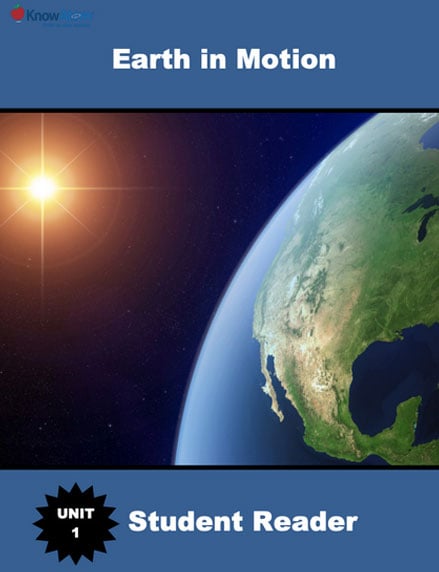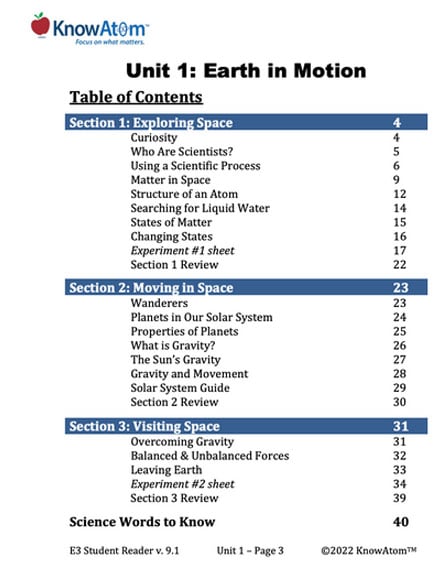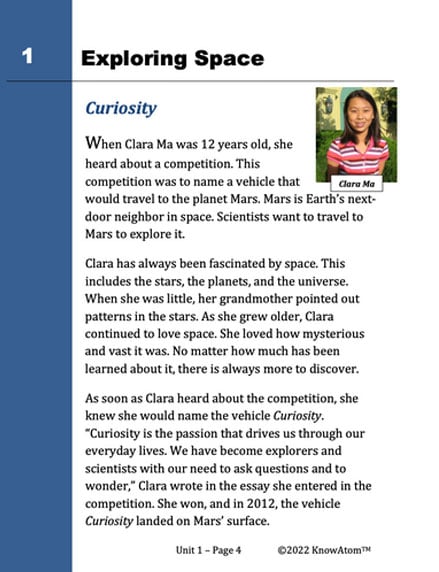Overcoming Gravity
Scientists sent Curiosity to Mars on a rocket in November 2011. The rocket launched from Cape Canaveral in Florida. More than thirteen thousand people watched it take off.
As scientists counted down, there was a loud noise. A trail of fiery gas seemed to push the rocket upward into the sky.
When a rocket takes off, an engine pushes hot gas down toward the ground. In reaction, the rocket moves up through the atmosphere.
The huge upward force is important. There has to be enough force to overcome the pull of Earth’s gravity. A force is a push or pull that acts on an object, changing its speed, direction, or shape.
Balanced & Unbalanced Forces
Forces are all around us. There are forces acting on you right now, even if you can’t feel them. Gravity is a force because it is pulling down on you.
Forces always come in pairs. For example, when you stand on the ground, gravity pulls you down toward the center of Earth. In reaction, the ground has its own force that pushes back up. This keeps you from sinking into the ground.
Forces can also be unbalanced. If the wall is not strong enough, the force of you leaning against the wall will cause the wall to collapse. This is because you applied a greater force to the wall than the wall returned.
The same thing happens when you lean against a wall. You apply a force to the wall. The wall applies the same amount of force in return. In this case, the forces are balanced.





.png?width=321&height=399&name=Screenshot%20(10).png)


